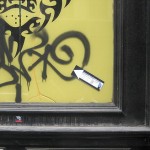 |
| Photo credits: All photos and illustrations (except for this one), kindly provided by Lensrentals. |
As promised, Lensrentals is back with part two of its flange-to-sensor measurement test, this time testing photo-centric cameras instead of cine cameras.
As Roger and his team meticulously pored over the measurements of every compatible camera they had on hand (the testing rig only had mount options for Canon, Sony and MFT cameras), they discovered a concerning percentage of Sony a7-series cameras had suffered from an unexpected and consistent failure of a key component.
Although Roger starts off his blog post with his Canon measurements, we’re going to begin with Sony, as that’s where the surprising and concerning discovery lies. In total, the Lensrentals team tested 487 various Sony full-frame and APS-C mirrorless bodies. To those concerned the in-body image stabilization (IBIS) would affect the flange-to-sensor distance, Roger has the following to say:
‘First let me mention that we asked and answered the obvious question “does the IBIS system change the flange-to-sensor distance.” We took some cameras, measured them, put a lens on, focused it on various things to run the IBIS, and measured again, about a dozen times each. Each camera had identical measurements every time.’
 |
| An overview of the flange-to-sensor distance measurements of all Sony cameras Lensrentals tested. Note the scale on all of these charts: this chart is -0.1mm to +0.1mm. |
With that debate wrapped up, Roger presents the overall findings for Sony mirrorless cameras (seen above) before further dividing up the Sony camera bodies, grouping the Sony a9 and Sony APS-C cameras together and grouping all of the a7-series camera bodies together. Roger grouped the data this way because the a9 and APS-C models ‘look[ed] marvelous,’ with minimal variation, while the a7-series showed rather dramatic variations, particularly with their outliers.
 |
| This is the a7-series chart, showing the a7R III (blue), a7R IV (red) and a7 III (yellow). Note the unusual number of outliers on the very extremes of the chart. |
After testing each unit, Roger pulled 28 outliers for further inspection (5.75% of the Sony cameras tested). While a few of them needed to have the lens mount screws tightened or entirely replaced to correct their flange-to-sensor distance, there were a number of units that stood out as ‘large outliers.’ Upon closer inspection, Roger and his team discovered a number of these units had a more unexpected and more serious issue: there was a fracture between the sensor mount and stabilization system.
 |
| The arrow points to a fractured sensor-to-IBIS mount inside a Sony a7-series camera. |
As you can see in Lensrentals’ a7R III teardown, Sony mounts the sensors to a plastic plate that attaches to the IBIS system via three screws. In two of the ‘large outlier’ units the plastic plate the sensor is mounted to had fractured; two others had screws that had wiggled their way out; one had what appeared to be a ‘metal fatigue type fracture’ in the mount; and one had a ‘displaced fracture of the sensor frame’ that was serious enough to pop off the retaining clip.
 |
| The arrow points to the tab where the retainer clip is supposed to be secured to. |
While these are all serious issues that raise concerns, Roger says he was amazed to realize ‘the cameras really didn’t show much disfunction.’ He elaborates:
‘If you had just shown me the pictures above I would have expected error messages, horrible images, something dramatic. These were renting regularly, customers were happy with them, our 64-point tech inspection was passed before and after each rental.’
Even after hours of stress testing by Lensrentals’ most experienced techs, the only complaints they had with these broken units were the same minor complaints a few renters had pointed out in the past, including ‘Seems images might be a little soft on one side,’ or ‘maybe the stabilization isn’t quite as good as it should be.’
Roger says it appears as though a single broken mount (remember, there are three screws holding the sensor to the IBIS unit) doesn’t appear to have much affect on overall operation, but suggests if two of the mounts were to break it would be likely to cause noticeable issues.
 |
| Roger says the crack in this image displaced the mount by about 0.5mm, but despite this dramatic displacement, the center of the sensor shifted much less than that. |
Wonky mounts and fractured components sound scary, but in total, less than 2% of Lensrentals’ Sony camera stock was found to have lens mount issues and only 1.6% suffered from the sensor mount problem. That’s not an insignificant number of cameras given how large the rental fleet is, but considering these are rental cameras and it took hours of intense inspection of the outlier samples to notice even the smallest impact on image quality, it’s hard to say how serious the issue really is in practical terms.
Wonky mounts and fractured components sound scary, but in total, less than 2% of Lensrentals’ Sony camera stock was found to have lens mount issues and only 1.6% suffered from the sensor mount problem
Still, though, any kind of failure like this is concerning and both Roger and DPReview have contacted Sony to inform them of Lensrentals’ finding and request comment on the matter.
With the Sony camera data out of the way, it’s on to Canon cameras. Within the data, Roger discovered a few interesting tidbits. First, the flange-to-sensor distance in photo cameras doesn’t vary any more than in Canon’s cine cameras. Second, of the 11 cameras (out of 478 Canon DSLR cameras tested) that Roger pulled for closer inspection due to variations, all of them were either 5D IV or 1DX bodies, i.e., pro bodies.
 |
| A chart showing the variation of the Canon DSLR cameras Lensrentals tested, with the outliers highlighted. Again, note the scale of this graph: this chart is -0.1mm to +0.04mm. |
Upon further inspection of the most affected camera bodies, Roger discovered each of them had a history of a drop or required ‘significant internal work’ after being rented out at one time or another. He also notes it makes sense these cameras are more susceptible to damage when bumped or dropped due to the tendency for these cameras to be used in harsher conditions and with longer, heavier telephoto lenses, which could more easily bend the mount ‘because force proportional to mass and all.’
Roger concludes his data with a breakdown of variation in 138 Micro Four Thirds cameras: 82 Panasonic units, 36 Olympus units and 20 Black Magic Pocket Cinema Camera 4K units.
 |
| A breakdown of the various Micro Four Thirds camer models Lensrentals tested. |
Overall, the variation between units proved to be relatively minimal, with only five cameras being outliers. Of these five cameras, four had been sent back to the factory to have their sensors replaced and one had a shutter replacement. Roger notes five other Micro Four Thirds cameras also had their sensors replaced and were within the nominal variation range, so don’t assume all cameras with sensor replacements will have abnormal flange-to-sensor distance measurements.
In wrapping up, Roger concludes that while it might’ve been seemed unnecessary to measure the flange-to-sensor distance of still cameras, it proved just as useful as it was with cine cameras. The team found fixable issues in roughly 2% of its still camera fleet thanks to the testing and, in Roger’s own words, ‘To me, that’s a huge thing […] Huge enough that we need to get a second Denz tool for the photo techs since the first one is already monopolized by the video people.’
Read the full article at Lensrentals.com
Articles: Digital Photography Review (dpreview.com)


























You must be logged in to post a comment.